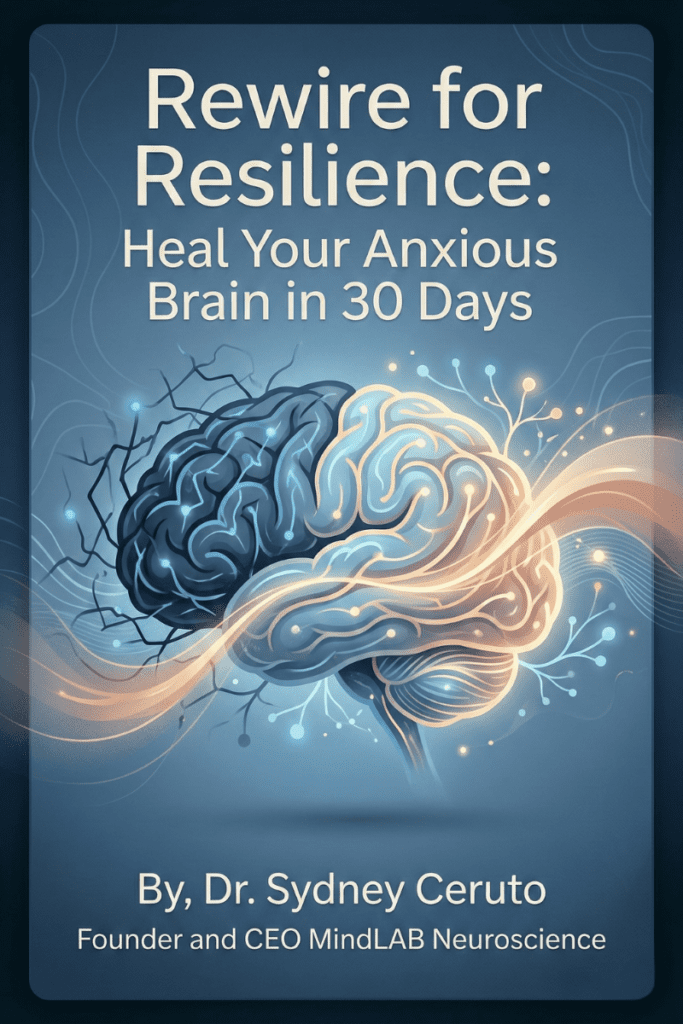The Lens Through Which We View the World: Embracing Perspective Change
Our perspectives shape our reality, pure and simple. They act as filters, coloring our experiences and influencing our decisions. But what exactly are perspectives, and how can perspective change transform our lives? Perspectives are mental frameworks we use to interpret the world around us. They’re formed through a complex interplay of our experiences, beliefs, cultural background, and cognitive processes. Neuroscience research has shown that our brains are constantly creating models of the world based on incoming sensory information and our existing knowledge. By actively engaging in perspective change, we can reshape these mental models and open ourselves to new possibilities.
The Neuroscience of Perspective
Recent studies in cognitive neuroscience have revealed fascinating insights into how our brains construct perspectives. The prefrontal cortex, often called the “CEO of the brain,” plays a crucial role in this process. It integrates information from various brain regions to form coherent interpretations of our experiences.Interestingly, the brain’s default mode network (DMN) is also heavily involved in perspective-taking. This network, which includes areas like the medial prefrontal cortex and posterior cingulate cortex, is active when we’re not focused on the external world. It’s associated with self-reflection, mental time travel, and considering others’ viewpoints.
Understanding Framing: The Architecture of Perspective
Framing is a fundamental concept in understanding how we perceive and interpret the world. It’s the mental structure we use to organize our thoughts, beliefs, and experiences.
What is Framing?
Framing refers to the way we package and present information to ourselves and others. It’s like a mental picture frame that highlights certain aspects of a situation while downplaying others. Our frames shape how we perceive events, make decisions, and respond to challenges.
The Power of Frames
Frames are incredibly influential in shaping our reality. They can:
- Direct our attention to specific aspects of a situation
- Influence our emotional responses
- Guide our decision-making processes
- Shape our expectations and predictions
Understanding the power of frames is crucial for gaining control over our perspectives and making more informed choices.
The Origins of Our Frames
Our frames don’t appear out of thin air. They’re shaped by a variety of factors:
- Personal experiences
- Cultural background
- Education and knowledge
- Social influences
- Media exposure
- Cognitive biases
Recognizing these influences can help us understand why we see the world the way we do and identify potential blind spots in our perspectives.
When Perspectives Go Awry: Rewiring for Resilience
Our brains are incredible organs, constantly interpreting the world around us. However, sometimes our perspectives can lead us astray due to cognitive biases. As a neuroscience-based life coach, I help people leverage their brain’s innate abilities to overcome these biases and develop more balanced viewpoints.
Cognitive biases are like mental shortcuts our brains take to process information quickly. While often useful, they can sometimes lead to distorted thinking. For example:
- Confirmation Bias: Our ventromedial prefrontal cortex tends to reinforce existing beliefs, making us seek out information that confirms what we already think.
- Negativity Bias: The amygdala, our brain’s alarm system, responds more strongly to negative stimuli, potentially skewing our outlook.
- Anchoring Effect: We often rely too heavily on the first piece of information we receive, a tendency linked to our dorsolateral prefrontal cortex.
The good news is that our brains are remarkably adaptable. Through neuroplasticity – the brain’s ability to form new neural connections – we can actually rewire our thought patterns. Moreover, neurogenesis, the creation of new neurons, allows us to build entirely new pathways supporting more adaptive perspectives.
To harness these abilities, we can:
- Practice cognitive restructuring to challenge and modify distorted viewpoints
- Engage in perspective-taking exercises to boost empathy and cognitive flexibility
- Use evidence-based decision-making techniques to activate our analytical brain regions
By applying these neuroscientific principles, we can transform non-advantageous thinking patterns into more beneficial ones. This leads to more balanced perspectives, improved decision-making, and ultimately, a more fulfilling life.
Remember, changing your perspective isn’t just about positive thinking – it’s about rewiring your brain for resilience and adaptability. With practice and persistence, you can train your brain to see the world in new, more empowering ways.
The Impact of Cognitive Biases
These biases can significantly impact our decision-making processes and hinder us from making a genuine perspective change. For example, confirmation bias can lead us to make decisions based on incomplete or skewed information, while the availability heuristic can cause us to overestimate the risks of rare but memorable events. Anchoring bias can result in poor financial decisions if we base our judgments on initial price points rather than the actual value.
The Danger of Echo Chambers in Perspective Change
In today’s digital age, it’s easier than ever to surround ourselves with information and people that confirm our existing views. This can create echo chambers that reinforce and amplify our biases, making it difficult to consider alternative perspectives. Social media algorithms often exacerbate this issue by curating content that aligns with our preferences, further entrenching our existing frames.
Overcoming Bias and Distortion
Recognizing and addressing cognitive biases is crucial for improving our decision-making. This involves actively seeking out diverse perspectives, questioning our assumptions, and being open to new information. Techniques such as critical thinking, reflective practice, and collaborative problem-solving can help us identify and mitigate the impact of biases on our perspectives.
The Art of Reframing: Perspective Change
Reframing is a powerful technique for changing how we perceive and respond to situations. It involves consciously shifting our mental frame to view a situation from a different angle.
Why Reframing Matters
Reframing can:
- Unlock new solutions to problems
- Reduce stress and negative emotions
- Improve relationships and communication
- Enhance creativity and innovation
- Increase resilience in the face of challenges
Techniques for Effective Reframing
- Question your assumptions: Challenge the beliefs underlying your current perspective
- Seek alternative viewpoints: Actively look for different ways of interpreting a situation
- Change the scale: Zoom in or out to gain a new perspective
- Shift the timeframe: Consider how you might view the situation in the past or future
- Adopt a different role: Imagine how someone else might perceive the situation
Neuroscience Insights for Better Framing
Recent advances in neuroscience offer valuable insights for improving our framing and reframing abilities:
Neuroplasticity: Rewiring Your Brain
The brain’s ability to form new neural connections throughout life, known as neuroplasticity, means we can actively reshape our perspectives. By consistently practicing reframing techniques, we can create new neural pathways that support more flexible thinking. This plasticity allows us to adapt our decision-making processes and overcome ingrained biases.
The Role of Emotions in Framing
Neuroscience research has highlighted the crucial role of emotions in shaping our perspectives. The amygdala, part of the brain’s limbic system, plays a key role in processing emotions and attaching emotional significance to our experiences. Understanding this connection can help us recognize how our emotions influence our frames and learn to regulate them more effectively.
Attention and Framing
Studies have shown that our attentional processes significantly impact how we frame situations. The brain’s reticular activating system (RAS) acts as a filter, determining what information reaches our conscious awareness. By consciously directing our attention, we can influence the frames our brains construct.
The Prefrontal Cortex and Decision-Making
The prefrontal cortex plays a crucial role in integrating information from various brain regions to form coherent interpretations of our experiences. This area is essential for complex decision-making and can be trained to improve our framing abilities.
The Default Mode Network (DMN)
The brain’s default mode network is associated with self-reflection, mental time travel, and considering others’ viewpoints. Engaging this network can help us develop more nuanced frames and perspectives.
Cognitive Load and Decision Quality
Neuroscience research has shown that cognitive load significantly impacts decision quality. Managing cognitive load through techniques like mindfulness and proper rest can improve our ability to frame situations effectively.
The Impact of Stress on Framing
Chronic stress can negatively affect the brain’s decision-making centers, particularly the prefrontal cortex. Stress management techniques can help maintain cognitive flexibility and improve our framing abilities.
Social Cognition and Framing
Neuroscience has revealed that our brains have specialized networks for social cognition. Developing these social cognitive skills can enhance our ability to frame situations in ways that resonate with others.
The Power of Mental Simulation
Neuroimaging studies have shown that mental simulation activates many of the same brain regions involved in actual experiences. Practicing reframing through mental simulation can be an effective way to develop new perspectives and decision-making strategies.
Unconscious Processing and Intuition
Research has shown that our brains process vast amounts of information unconsciously. Learning to tap into and trust these intuitive processes can complement our conscious framing efforts.
By understanding and leveraging these neuroscientific insights, we can develop more effective strategies for framing and reframing our perspectives. This knowledge empowers us to make better decisions, communicate more effectively, and navigate complex situations with greater clarity and confidence.
Practical Steps for Mastering Your Perspectives
- Practice mindful awareness: Pay attention to your thoughts and reactions without judgment
- Keep a perspective journal: Record different ways of framing situations you encounter
- Seek diverse experiences: Expose yourself to new ideas, cultures, and viewpoints
- Engage in perspective-taking exercises: Regularly practice seeing situations from others’ points of view
- Learn about cognitive biases: Familiarize yourself with common biases to better recognize them in your thinking
- Use visual aids: Create mind maps or diagrams to explore different ways of framing a situation
- Collaborate with others: Engage in discussions that challenge your perspectives and expose you to new frames
Applying Reframing Techniques to Improve Decision-Making
Reframing can significantly enhance your decision-making abilities. Here are some practical strategies:
- Identify negative thoughts and challenge their accuracy
- Replace negative thoughts with more balanced or positive alternatives
- Increase your field of view by considering the broader context
- Use visual aids to explore different framing options
- Collaborate with others to gain fresh insights
- Practice empathy by considering others’ perspectives
- Learn from failures by reframing them as learning opportunities
- Boost confidence by reframing self-doubt into self-belief

The Psychological Benefits of Regular Reframing Practice
Regularly practicing reframing can yield numerous psychological benefits:
Reduced Stress and Anxiety
Reframing helps manage stress by altering our perception of stressful situations. By viewing challenges as opportunities for growth, we can reduce anxiety and develop a more resilient mindset.
Improved Mental Health
Positive reframing has been shown to alleviate symptoms of depression, anxiety, and PTSD. By shifting our focus from negative to positive aspects, we can nurture a healthier mental state and improve overall well-being.
Enhanced Emotional Regulation
Reframing enables better emotional regulation by helping us understand and manage our emotional responses. This can lead to more stable and balanced emotional states, reducing the likelihood of emotional outbursts or prolonged negative moods.
Increased Optimism and Life Satisfaction
Regular reframing practice fosters a more optimistic outlook on life. By consistently finding positive aspects in challenging situations, we can increase our overall life satisfaction and develop a more hopeful perspective on the future.
Strengthening Connections Through Perspective Change
Neuroscience reveals that perspective change can significantly impact our relationships. When we actively shift our viewpoint, we engage different neural networks, particularly those associated with empathy and social cognition. This neuroplasticity allows us to better understand others’ experiences and emotions. By practicing perspective change, we can:
- Enhance emotional intelligence: Neuroscientific studies show that adopting different perspectives activates the anterior insula and anterior cingulate cortex, regions crucial for empathy and social awareness.
- Improve conflict resolution: Perspective change engages the prefrontal cortex, aiding in more nuanced problem-solving and reducing knee-jerk emotional responses.
- Deepen interpersonal connections: Regular perspective-taking exercises strengthen neural pathways associated with social bonding, potentially increasing oxytocin release during positive interactions.
By harnessing these neuroscience-backed benefits of perspective change, we can foster more meaningful, empathetic, and resilient relationships in both personal and professional spheres.
Greater Cognitive Flexibility in Perspective Change
Perspective change is not just a mental exercise; it’s a powerful tool for rewiring our neural pathways and enhancing cognitive flexibility. Neuroscience research reveals that actively engaging in perspective shifts can lead to significant improvements in our cognitive abilities:
- Neuroplasticity: Regular perspective changes stimulate neuroplasticity, the brain’s ability to form new connections and reorganize itself. This process strengthens our cognitive adaptability, allowing us to navigate complex situations with greater ease.
- Enhanced problem-solving: By adopting different viewpoints, we activate diverse neural networks, particularly in the prefrontal cortex and posterior parietal cortex. This cross-activation leads to more creative and innovative solutions to challenges.
- Improved decision-making: Perspective change exercises the anterior cingulate cortex, a region crucial for conflict monitoring and decision-making. This results in more balanced and well-considered choices in both personal and professional realms.
- Increased mental agility: Consistently practicing perspective shifts strengthens the brain’s executive functions, including working memory and cognitive control. This heightened mental agility allows for quicker adaptation to new information and changing circumstances.
- Reduced cognitive biases: By challenging our existing mental models, perspective change helps mitigate cognitive biases such as confirmation bias and anchoring effect. This leads to more objective analysis and decision-making.
- Enhanced learning capacity: The neural connections formed through perspective change contribute to a more robust and flexible cognitive framework, facilitating faster and more effective learning across various domains.
- Stress resilience: Regular engagement in perspective change activities has been shown to reduce activity in the amygdala, the brain’s fear center, while increasing activity in the prefrontal cortex. This shift can lead to improved emotional regulation and stress management.
By cultivating cognitive flexibility through perspective change, we equip ourselves with a powerful tool for navigating the complexities of modern life, fostering innovation, and adapting to an ever-changing world.
The Ongoing Journey of Perspective Mastery
Mastering the art of framing and reframing is a lifelong journey. To effective “change perspective”, we need to trust in the science of neuroplasticity if we want to acquire results that are enduring. Our perspectives are constantly evolving as we gain new experiences and knowledge. By remaining curious, open-minded, and committed to growth, we can continually refine our ability to see life more accurately and respond to challenges more effectively.
Remember, the goal isn’t to find a single “correct” perspective, but to develop the flexibility to shift between different frames as needed. This adaptability is key to navigating the complexities of our ever-changing world and unlocking our full potential for personal and professional growth.By harnessing the power of framing and reframing, we can transform our relationship with the world around us, opening doors to new possibilities and a richer, more nuanced understanding of life.
When You Can’t Do This Alone
Changing your perspective is a powerful tool for personal growth, but it can be challenging to undertake alone. Self-reflection is inherently difficult due to cognitive biases and ingrained thought patterns, making it hard to objectively evaluate our own perspectives.
The Role of a Neuroscience-Based Coach or Counselor
A trained neuroscience-based coach or counselor can provide the necessary guidance and support. They understand the complexities of the brain and how it influences our thoughts, emotions, and behaviors. By leveraging this expertise, they can help you identify and overcome cognitive biases, reframe negative thought patterns, and develop healthier perspectives.
Personalized Guidance and Accountability
Working with a coach or counselor offers personalized guidance tailored to your unique needs. They provide specific strategies and techniques to help you navigate the challenges of perspective change. Additionally, they offer accountability, helping you stay on track and monitor your progress.
Overcoming Emotional Barriers
Emotions can be significant barriers to perspective change. A professional can help you navigate these emotional landscapes, providing a safe space to explore and process your feelings. This support is crucial for achieving a deeper and more sustainable transformation.





